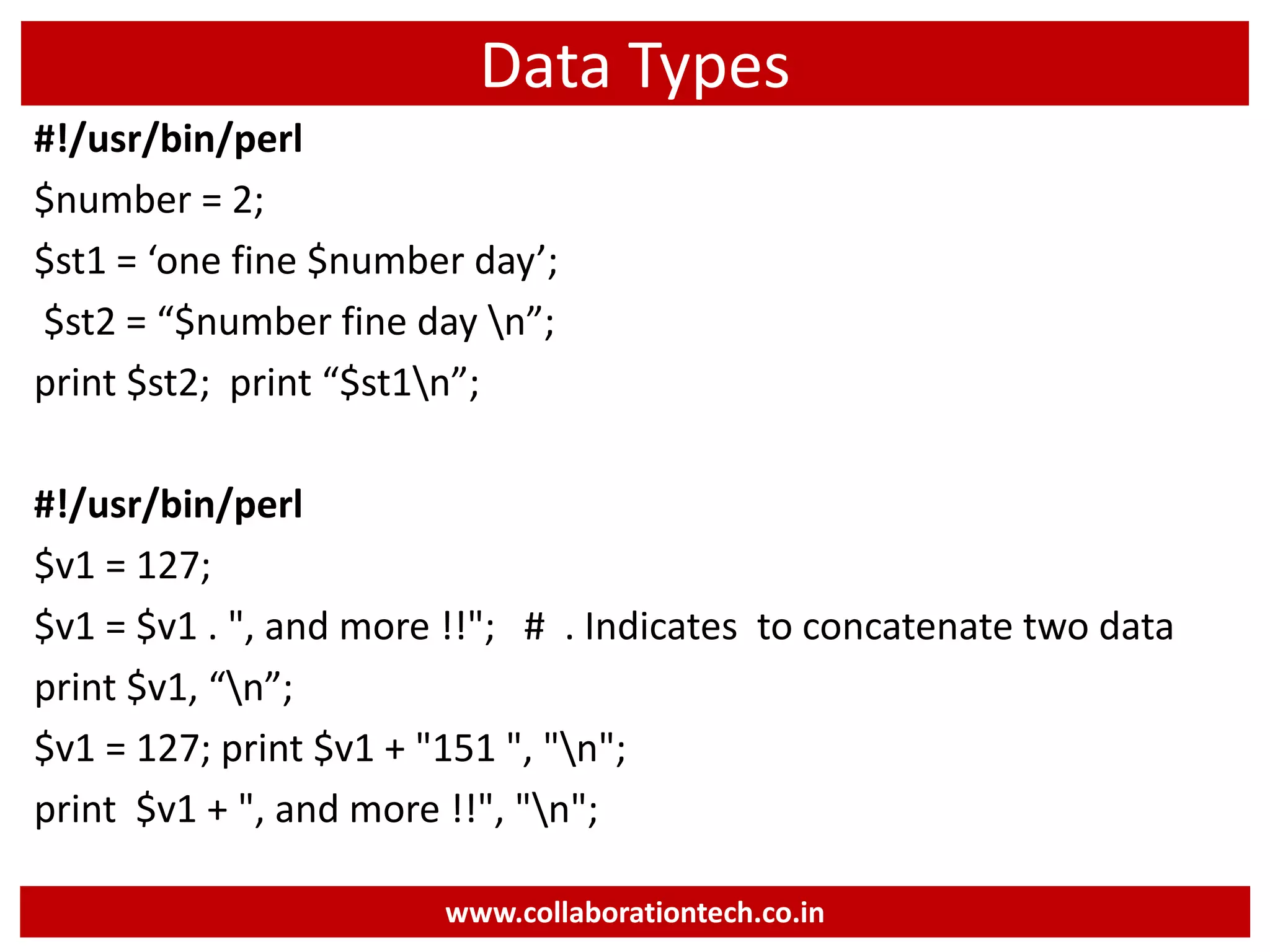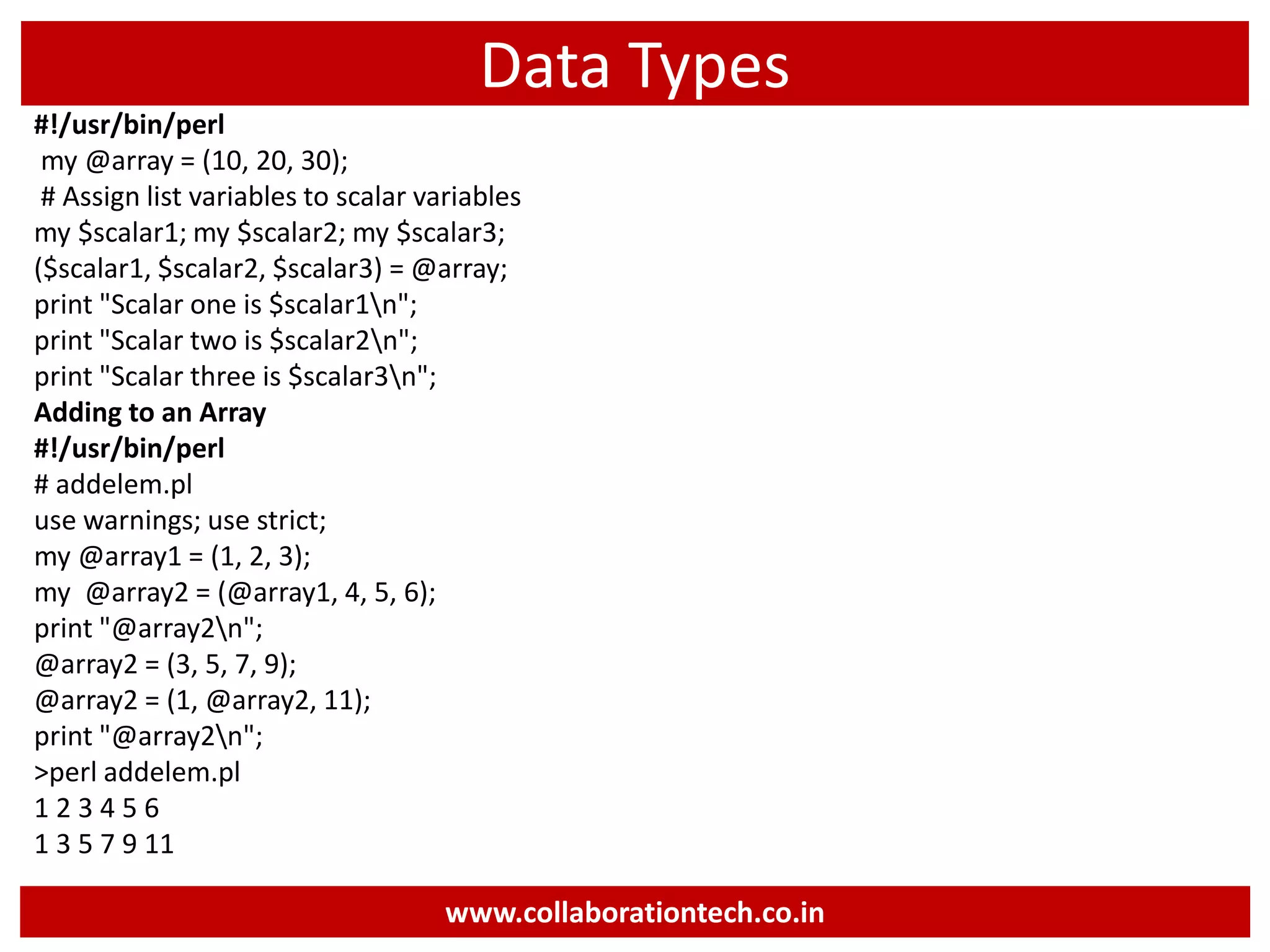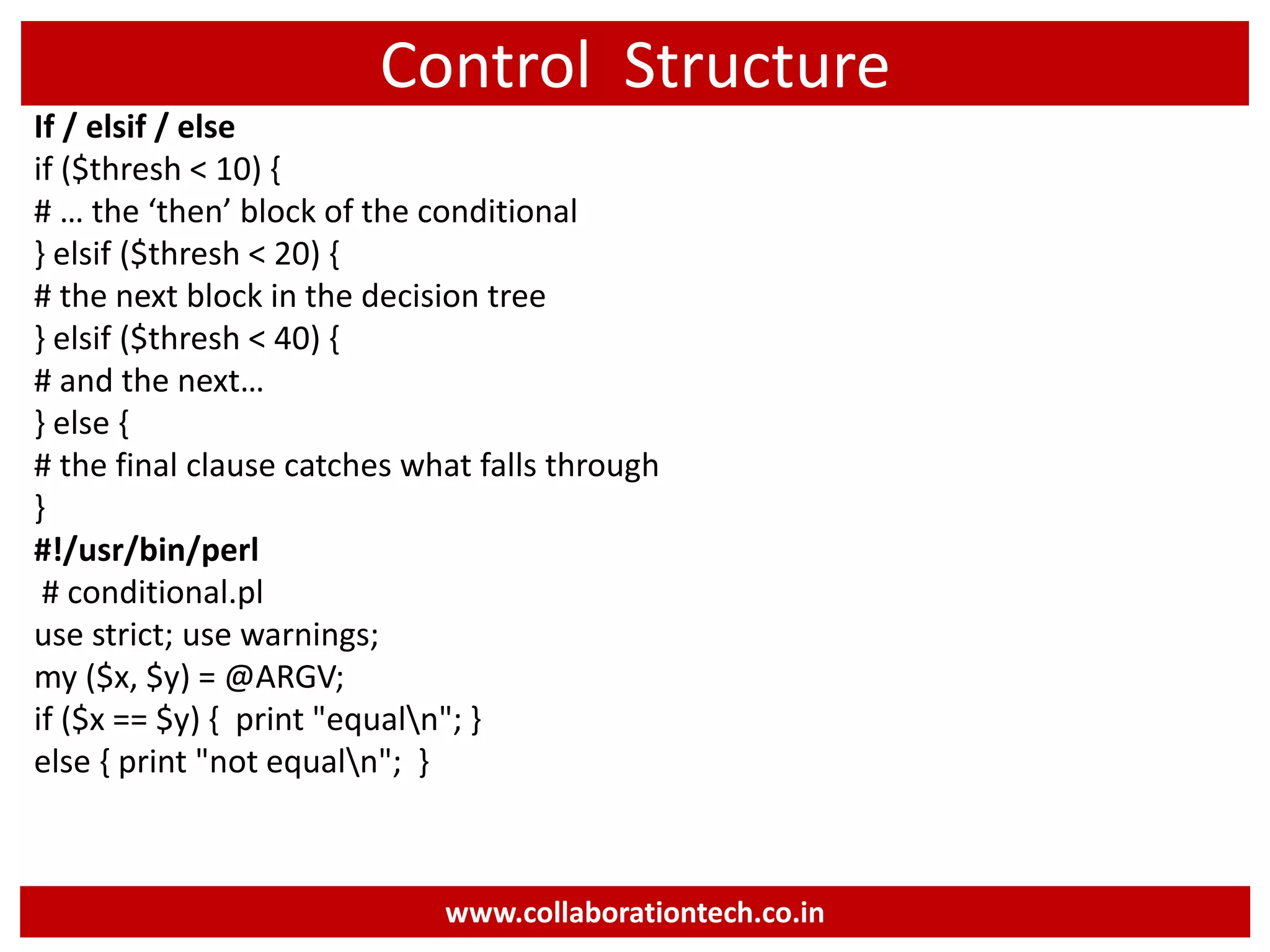The document presents an introduction to Perl programming, covering various essential topics such as data types, control structures, functions, and modules. It emphasizes Perl's interpreted nature, flexibility, and historical context as a scripting language. Additionally, it provides examples for getting started with Perl and defines key concepts such as arrays and subroutines.







![Functions and Subroutines func2.pl: firstSub(1, 2, 3, 4, 5, 6); firstSub(1..3); firstSub("A".."Z"); sub firstSub() { $numParameters = @_ ; print("The number of parameters is $numParametersn"); } func4.pl|: @array = (0..5); print("Before function call, array = @arrayn"); firstSub(@array); print("After function call, array = @arrayn"); sub firstSub{ $_[0] = "A"; $_[1] = "B";} This program prints: Before function call, array = 0 1 2 3 4 5 After function call, array = A B 2 3 4 5} www.collaborationtech.co.in](https://image.slidesharecdn.com/doneperl-intro-170210095548/75/Introduction-to-Perl-Programming-8-2048.jpg)




